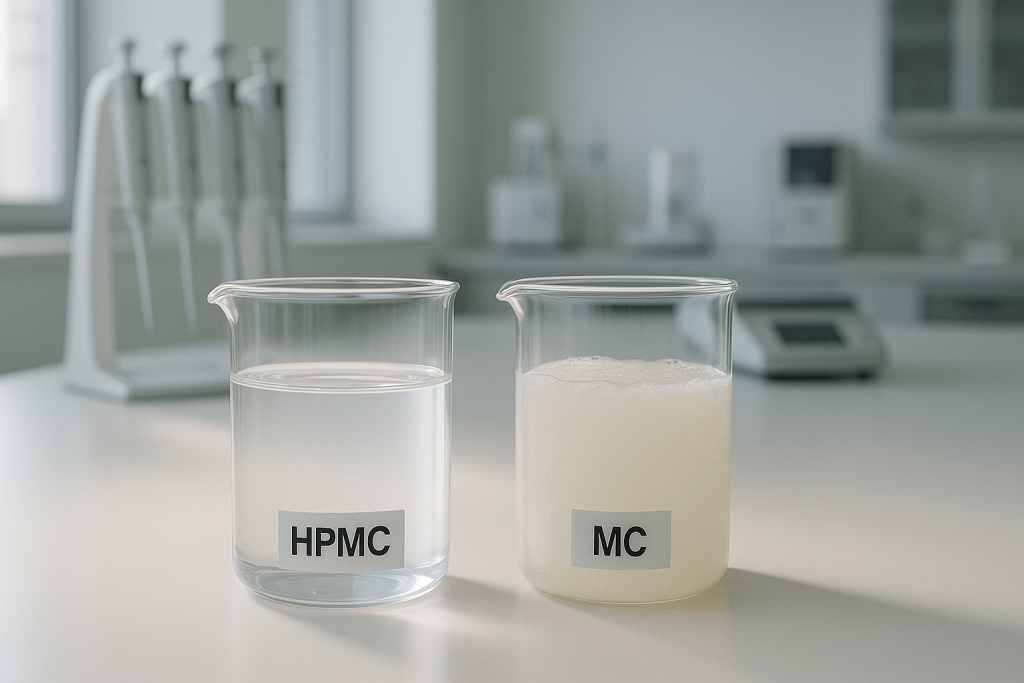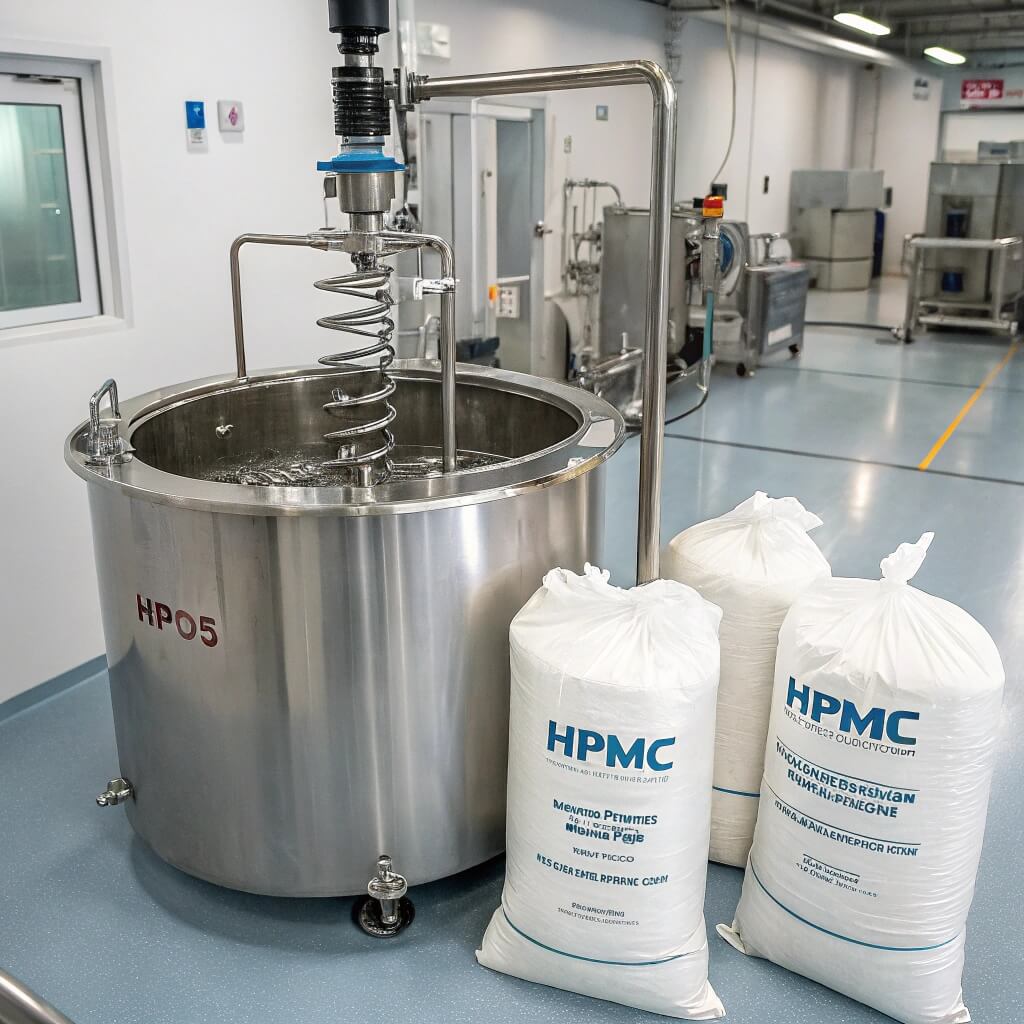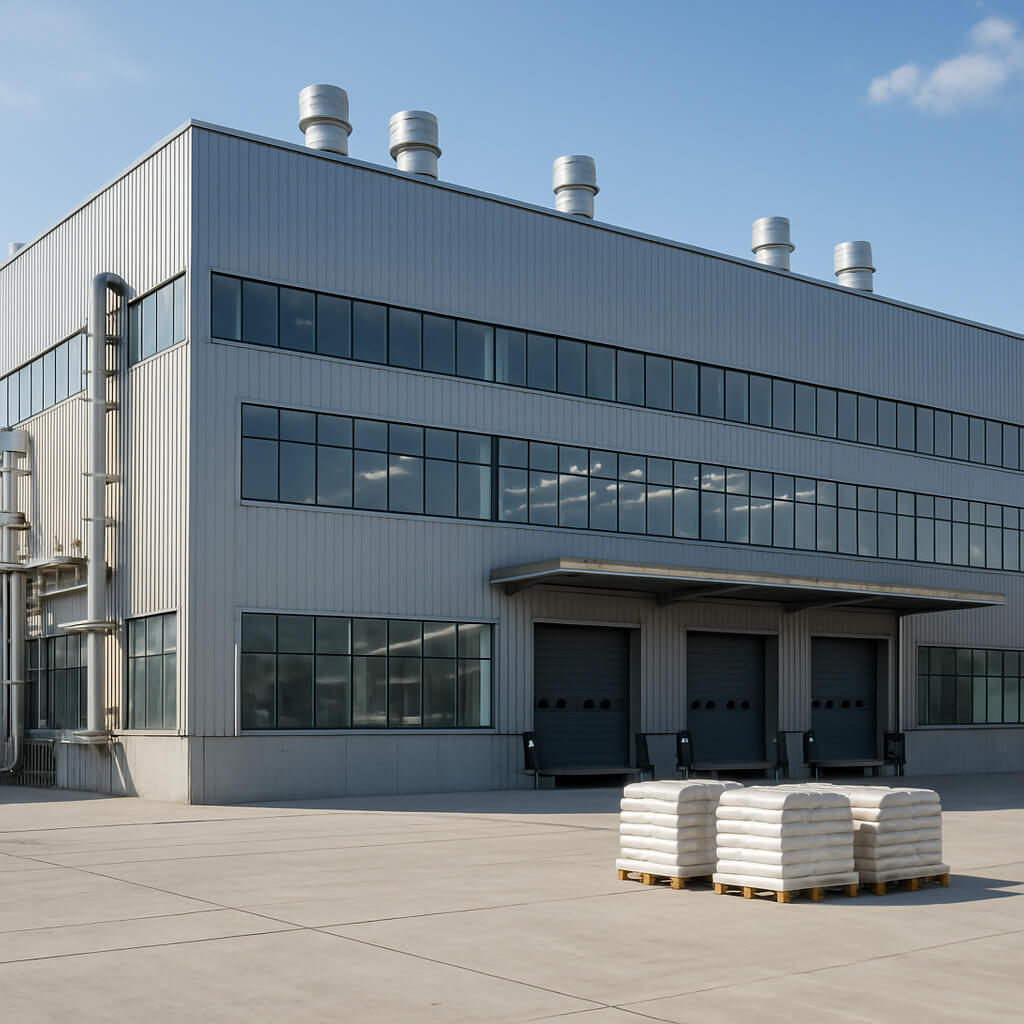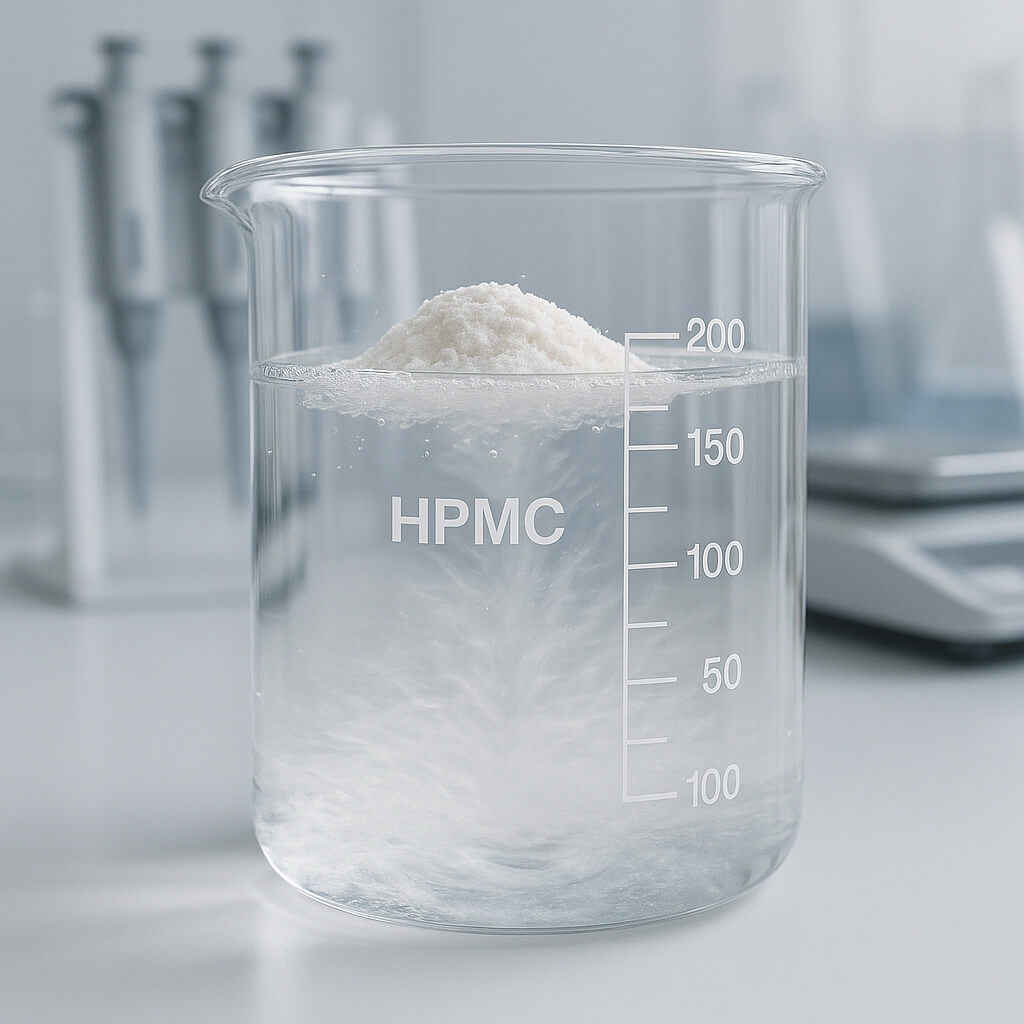When it comes to cellulose derivatives, Hydroxypropyl Methylcellulose (HPMC) and Methylcellulose (MC) are two of the most commonly used materials. These compounds are integral to a variety of industries, including pharmaceuticals, construction, and food production. But how do they compare? Which is the best choice for your application? In this article, we’ll explore the key differences between HPMC and MC, their unique properties, and how to determine which one is right for your needs. Ready for the good part? Let’s dive into the details!

1. ¿Qué es la hidroxipropilmetilcelulosa (HPMC)?
Hydroxypropyl Methylcellulose (HPMC) is a cellulose derivative that is widely used as a thickening agent, binder, and stabilizer in various industrial applications. But here’s the kicker—what makes HPMC stand out from other cellulose derivatives is its ability to retain moisture, improve texture, and enhance the stability of products. It’s commonly used in construction, pharmaceuticals, food production, and even cosmetics.
The chemical structure of HPMC consists of cellulose, a naturally occurring polymer, which is modified by introducing hydroxypropyl and methyl groups. These modifications help HPMC dissolve in cold water, making it useful in a variety of aqueous formulations. In the construction industry, HPMC is often added to dry mortars, adhesives, and coatings to improve their workability and extend their open time. In pharmaceuticals, it is used as a binder in tablet formulations, and in food products, it acts as a stabilizer and thickening agent.
HPMC’s ability to form gels and its water retention properties also make it ideal for controlled-release drug formulations. Its versatility is one of the reasons why it is so widely used across different sectors.
| Propiedad | HPMC | MC |
|---|---|---|
| Solubilidad | Soluble en agua | Soluble en agua |
| Viscosidad | Varies (can be customized) | Viscosidad moderada |
| Usos comunes | Pharmaceuticals, food, construction | Productos farmacéuticos, alimentos, cosméticos |
2. What is Methylcellulose (MC)?
Methylcellulose (MC), like HPMC, is a cellulose derivative. However, the difference lies in its chemical structure and properties. ¿Cual es la verdadera historia? Unlike HPMC, MC is made by treating cellulose with methyl chloride, introducing methyl groups into the cellulose chain. This modification results in a water-soluble material that behaves differently than other cellulose derivatives.
MC is a versatile ingredient that can form gels in hot water, which makes it an ideal ingredient for use in food products such as ice cream and salad dressings, where gel formation and stability are essential. Additionally, it is widely used in pharmaceutical formulations, primarily as a binder for tablets and a stabilizer in suspensions.
One of the most distinctive properties of MC is its ability to form gels when heated, which makes it particularly useful in high-temperature applications. In construction, it is also used in dry mixes and tile adhesives to improve the texture and bonding strength. MC offers several advantages, such as better gelation properties and a higher resistance to temperature changes compared to HPMC.
| Propiedad | MC | HPMC |
|---|---|---|
| Estructura química | Methylated cellulose | Hydroxypropyl and methylated cellulose |
| Gelation | Forms gel in hot water | Forms gel in cold water |
| Primary Uses | Productos farmacéuticos, alimentos, cosméticos | Pharmaceuticals, food, construction |
3. What Are the Key Differences Between HPMC and MC?
At first glance, Hydroxypropyl Methylcellulose (HPMC) and Methylcellulose (MC) may seem similar, but there are some key differences that set them apart. Aquí es donde se pone interesante.—the primary difference lies in their chemical structure, which affects how they behave in various applications.
For starters, HPMC has both hydroxypropyl and methyl groups, which gives it its unique properties of water retention and solubility at low temperatures. In contrast, MC only has methyl groups, which impacts its behavior in aqueous solutions. MC is unique in that it forms a gel when heated, whereas HPMC remains stable in cold water but does not gel at high temperatures.
When it comes to pharmaceutical applications, both HPMC and MC serve as binders, but HPMC’s versatility makes it more suitable for controlled-release systems, while MC is typically used for rapid dissolution. In construction, HPMC’s water retention properties make it ideal for use in mortar and adhesives, while MC’s ability to withstand higher temperatures gives it an edge in environments where heat resistance is important.
| Característica | HPMC | MC |
|---|---|---|
| Chemical Modifications | Hydroxypropyl and methyl groups | Methyl groups only |
| Gelation Behavior | Forms gel in cold water | Forms gel in hot water |
| Primary Application | Pharmaceuticals, construction | Productos farmacéuticos, alimentos, cosméticos |
4. How Do HPMC and MC Perform in Construction Applications?
In the construction industry, both HPMC and MC are widely used as additives in dry mixes, mortars, and adhesives. ¿Listo para la buena parte? While both materials improve workability, water retention, and adhesion, they each have specific strengths.
HPMC’s ability to retain moisture is crucial in construction applications, particularly in dry mixes for mortars, tile adhesives, and plasters. The material extends the working time of these products, allowing construction professionals to apply them more easily before they begin to set. This is especially important when working in large areas or under time constraints.
On the other hand, MC is often used in tile adhesives and coatings where temperature stability is required. Since MC gels when exposed to heat, it provides additional thermal stability in high-temperature environments, making it a preferred choice for certain applications.
| Solicitud | HPMC | MC |
|---|---|---|
| Mortars and Dry Mixes | Improves workability and moisture retention | Provides texture and stability at high temperatures |
| Adhesivos para baldosas | Extends open time and enhances adhesion | Provides thermal stability and gel formation |
| Coatings | Increases water retention and ease of application | Ideal for heat-resistant coatings |
5. How Are HPMC and MC Used in Pharmaceutical Formulations?
Hydroxypropyl Methylcellulose (HPMC) and Methylcellulose (MC) are both essential in pharmaceutical formulations due to their binding and stabilizing properties. Pero aquí está el truco.—while both serve similar functions, their specific applications differ.
HPMC is primarily used in tablet formulations where it serves as a binder, stabilizer, and controlled-release agent. It helps tablets maintain their shape and ensures that active ingredients are released over an extended period. In addition, HPMC is frequently used in ophthalmic solutions and as a film coating in pharmaceutical capsules.
MC, on the other hand, is often used as a binder and disintegrant in tablets, helping them break down quickly when ingested. While it also plays a role in suspensions and emulsions, its gelation properties make it ideal for high-viscosity formulations. MC is commonly used in chewable tablets and oral suspensions.
| Solicitud | HPMC | MC |
|---|---|---|
| Encuadernadores de tabletas | Provides sustained-release properties | Rapid disintegration for quick release |
| Recubrimientos de película | Used in capsule coatings | Less commonly used for coatings |
| Suspensions | Stabilizer for liquid formulations | Stabilizer and gel former in suspensions |
6. What Are the Applications of HPMC and MC in Food Products?
Both HPMC and MC are used extensively in the food industry to improve texture, consistency, and stability. ¿Cual es la verdadera historia? Let’s break down how these two materials perform in food formulations.
HPMC is a popular ingredient in gluten-free baking products, where it helps improve texture and provides structure to baked goods. It also acts as a stabilizer in beverages, sauces, and dressings, preventing ingredients from separating. HPMC’s ability to retain water and form gels is useful in a variety of food applications, making it an essential ingredient in many processed foods.
MC, with its gelation properties, is frequently used in dairy products like ice cream to prevent ice crystal formation, improving the texture and mouthfeel. It is also used in processed foods like salad dressings, where it helps stabilize emulsions and maintain product consistency.
| Aplicación alimentaria | HPMC | MC |
|---|---|---|
| Baked Goods | Improves texture in gluten-free products | Less commonly used in baking |
| Beverages & Sauces | Stabilizes emulsions and prevents separation | Provides texture and stabilizes sauces |
| Productos lácteos | Used in texture improvement | Prevents ice crystal formation in ice cream |
7. How Do HPMC and MC Compare in Terms of Environmental Impact?
As environmental concerns continue to rise, it’s essential to consider the environmental impact of the materials used in various industries. Aquí es donde se pone interesante.—both HPMC and MC are biodegradable and generally considered to have minimal environmental impact. However, their manufacturing processes can vary, which may affect their eco-friendliness.
The production of HPMC often involves the use of solvents and chemicals, which can have environmental consequences if not properly managed. However, many manufacturers are now adopting more sustainable practices to reduce the environmental footprint. MC, while also biodegradable, tends to be produced with fewer chemicals, making it a more eco-friendly choice in some applications.
| Factor | HPMC | MC |
|---|---|---|
| Biodegradabilidad | Biodegradable | Biodegradable |
| Manufacturing Impact | Can involve solvent use | Fewer chemicals used in production |
8. How to Choose Between HPMC and MC for Your Application?
Choosing between Hydroxypropyl Methylcellulose (HPMC) and Methylcellulose (MC) depends on a variety of factors, including the specific needs of your application. Aquí está el trato—both materials have their strengths, but some applications require one over the other.
If your primary concern is moisture retention and ease of use in construction products, HPMC might be the better choice. If temperature stability and gelation are crucial in your formulation, MC may be the ideal option. Additionally, HPMC’s versatility in pharmaceutical and food applications makes it a popular choice for those seeking long-lasting and consistent results.
| Application Criteria | HPMC | MC |
|---|---|---|
| Retención de humedad | Ideal for construction and food | Not as effective for moisture retention |
| Temperature Stability | Not suitable for high temperatures | Ideal for heat-resistant applications |
| Versatilidad | Suitable for many applications | Best for gelation and texture control |
9. What Are the Advantages and Disadvantages of Using HPMC and MC?
Both HPMC and MC offer significant advantages, but they also come with certain drawbacks. ¿Listo para la buena parte? Let’s compare the pros and cons of each.
HPMC’s advantages include its wide range of uses in different industries, its ability to form gels at lower temperatures, and its versatility in improving texture, stability, and moisture retention. However, its manufacturing process can involve more chemicals, which may impact its environmental friendliness.
MC, on the other hand, excels in heat resistance and gel formation, making it ideal for high-temperature applications. It is also more eco-friendly due to its simpler production process. The downside is that it may not be as versatile as HPMC in certain applications, especially in food and pharmaceutical formulations.
| Factor | HPMC | MC |
|---|---|---|
| Versatilidad | High, used across industries | Limited primarily to gelation |
| Impacto ambiental | Higher due to more chemicals | More eco-friendly |
| Application Range | Broad, including food, pharma | Primarily used in food and cosmetics |
10. How Do HPMC and MC Affect Product Cost and Performance?
When selecting between HPMC and MC, the cost and performance of the material must be considered. ¿Cual es la verdadera historia? Let’s explore how each material affects product cost and performance across various industries.
HPMC tends to be more expensive than MC due to its manufacturing process and its broader range of applications. However, its performance in specific applications such as controlled-release pharmaceuticals and construction products often justifies the higher cost. MC is generally more affordable but may not provide the same level of performance across as many industries.
| Factor | HPMC | MC |
|---|---|---|
| Costo | Higher due to more complex production | Lower cost, simpler production |
| Actuación | High performance across many industries | Best in specific applications like food |
Conclusión
In conclusion, both HPMC and MC are essential cellulose derivatives that offer unique benefits across different industries. Aquí es donde se pone interesante.—the right choice between HPMC and MC depends on your specific needs, whether that’s moisture retention, heat resistance, or gel formation. By understanding the differences in their properties and applications, you can make an informed decision that best suits your business requirements.
Sección de preguntas frecuentes
Pregunta 1: ¿Qué es la hidroxipropilmetilcelulosa (HPMC)?
HPMC es un derivado de celulosa que se utiliza como agente espesante, aglutinante y estabilizador en diversas industrias, incluidas la construcción, la farmacéutica y la alimentaria.
Pregunta 2: How does Methylcellulose (MC) work?
MC is a cellulose derivative known for its ability to form gels and act as a stabilizer, thickening agent, and emulsifier in various applications.
Pregunta 3: What are the main differences between HPMC and MC?
HPMC and MC differ in their chemical structures and solubility properties, which impact their use in different industries and applications.
Pregunta 4: How are HPMC and MC used in the pharmaceutical industry?
Both HPMC and MC are used as binders, stabilizers, and controlled-release agents in pharmaceutical formulations to enhance drug delivery.
Pregunta 5: Which material is more environmentally friendly, HPMC or MC?
Both HPMC and MC are biodegradable, but their environmental impact can vary depending on the manufacturing processes and specific applications used.




